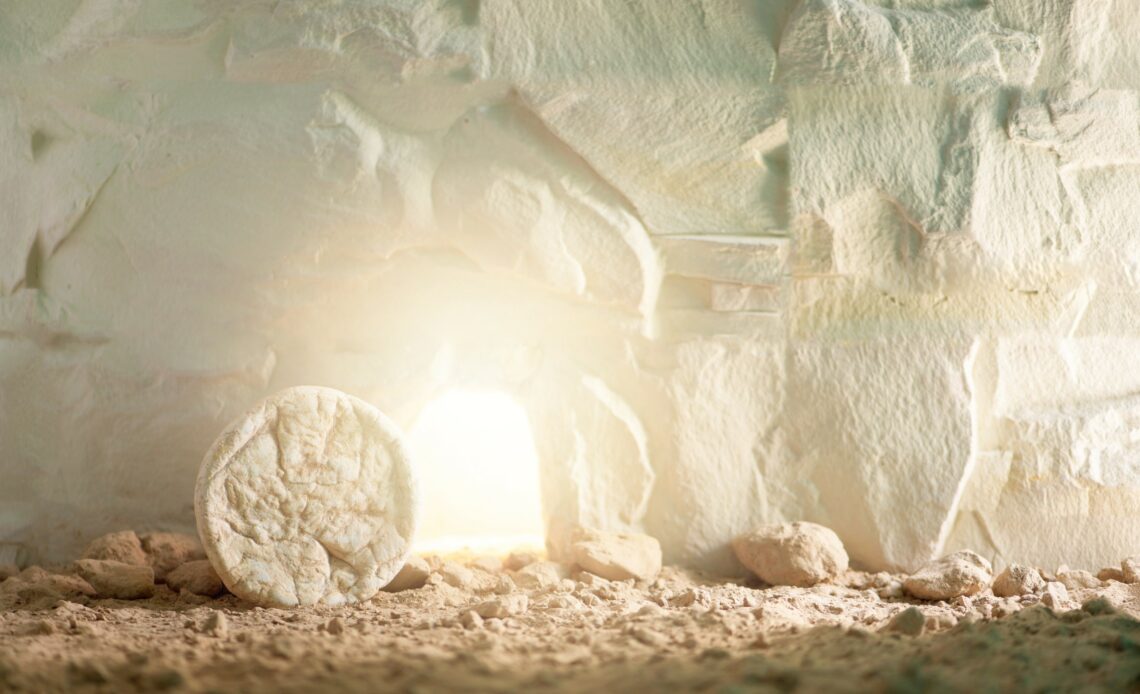On the surface, the first Easter Sunday looked like a day much like any other around that time. Outside of some Passover celebrations that were likely winding down by the early morning hours of that day, life in and around Jerusalem largely looked like the countless Sundays that had come and gone before it. Undoubtedly, some people were still discussing the events of the crucifixion, but that wasn’t exactly new. There had been crucifixions before, and there would be crucifixions after. On the surface, no one had any idea that the first Easter Sunday would prove to be the Resurrection of Christ and the most important day in the history of the world.
If you asked most people to share the most important date in human history, many of them would point to days that ended wars, days on which new political authorities rose to power, or days in which new lands were discovered. If you asked the average American about the most important date in human history, he or she may point to July 4, 1776, the birthdate of our nation. Citizens of other countries would also likely point to their own version of Independence Day. Some may answer the question with the birthdate of a great world leader, a medical revolution, or another keystone event. However, none of those events can compare to the first Resurrection Sunday.
While the first Easter is the most important day in human history, it continues to be one of the most debated. That shouldn’t come as a surprise. The Bible teaches us that Pilate told the guards who were watching the tomb on the first Easter to lie about what had happened in order to create a debate. Thousands of years later, there are still detractors and doubters. However, we can look to the Bible, the Holy Spirit-inspired Word of God, to find some foundational truths about the first Easter.
Jesus Was Dead
John 19:30-34 (TPT)
When he had sipped the sour wine, he said, “it is finished my bride!” Then he bowed his head and surrendered his spirit to God. The Jewish leaders did not want the bodies of the victims to remain on the cross through the next day, since it was the day of preparation for a very important Sabbath. So they asked Pilate’s permission to have the victims’ legs broken to hasten their death and their bodies taken down before sunset. So the soldiers broke the legs of the two men who were nailed there. But when they came to Jesus, they realized that he had already died, so they decided not to break his legs.
For many years, detractors have tried to push a narrative that Christ did not really die on the cross. They say that He had actually fainted due to the blood loss and the amount of pain that He was suffering, leading the guards to believe that He was dead. With this single baseless claim, they refute the resurrection of Christ, saying that Christ simply “woke up” from his unconscious state and walked out of the tomb.
As believers, we know that this isn’t true because the Bible says that He died. However, there are also logistical issues to consider. When Christ was placed in the tomb, the stone was rolled in front of the door, and the tomb was sealed. This means that there was a cement-like substance placed around the stone, holding it in place. Additionally, there were multiple guards around the tomb. If the resurrection of Christ story was made up, and Christ wasn’t who He said He was, those issues would have made it impossible for Him to simply walk away. Make no mistake about it, Christ was dead on the morning of the first Easter.
Jesus Had a Physical Resurrection
John 20:27 (TPT)
Then, looking into Thomas’ eyes, he said, “Put your finger here in the wounds of my hands. Here-put your hand into my wounded side and see for yourself. Thomas, don’t give in to your doubts any longer, just believe!”
While Jesus raised from the dead with a glorified body that was capable of supernaturally moving through walls and doors (John 20:26), it’s important to understand that when He raised from the dead, He didn’t just leave His body behind. Even though His resurrected body was a spiritual, glorified body, He had a physical resurrection. We know this because He pointed Thomas to the wounds that He suffered on the cross. Additionally, we see in John 20:12 that Jesus ate fish.
The fact that Christ experienced a physical resurrection encourages us with the fact that we will experience a physical resurrection. While we do not know what our glorified, resurrected bodies will look like on the day that Christ returns for His Church, we do know that we will exist in Heaven for eternity in some sort of physical state.
The Resurrection Confirms the Trinity’s Experience
Romans 8:11 (TPT)
Yes, God raised Jesus to life! And since God’s Spirit of Resurrection lives in you, he will also raise your dying body to life by the same Spirit that breathes life into you!
The celebration of Easter is a wonderful opportunity to focus on the life that Jesus lived, His willingness to lay down His life for us, and the fact that He raised again. However, within the story of the resurrection of Christ, we can see all three members of the Godhead.
Paul opens this verse by declaring that God raised Jesus to life. God the Father, the Creator of everything both seen and unseen, was the catalyst for the resurrection. Obviously, we know that Jesus was there. He had died on the Friday before the first Easter. However, we also see the Holy Spirit at work in the resurrection. In Romans 6:10-11, Paul spoke about the same Spirit that raised Jesus from the dead having the power to raise us on the day of Christ’s return.
The Trinity’s existence is confirmed by the story of the resurrection, and we can see all three members working for our good in the Gospel accounts of the first Easter.
The Resurrection Confirms Christ’s Claims
Matthew 16:21 (TPT)
From then on Jesus began to clearly reveal to his disciples that he was destined to go to Jerusalem and suffer injustice from the elders, leading priests, and religious scholars. He also explained that he would be killed and three days later be raised to life again.
Several chapters before this passage, Jesus was asked for a sign that would prove that He was really the Messiah. In Matthew 12:38-40, He spoke about the sign of Jonah. Jesus explained that in the same way that Jonah spent three days in the belly of a large fish, Jesus would spend three days tucked away in the bowels of the earth.
By the time that the first Easter came around, the disciples had forgotten about the statement from Matthew 12. In fact, they appeared to have forgotten about the promise that Jesus made in Matthew 16. However, with the benefit of hindsight, we can see that the first Easter completely confirmed Christ’s claims about Himself. We do not have to wonder if He was who He said He was. We don’t have to doubt His goodness, His love for us, or the promise of salvation that we have through Him.
A Closing Prayer:
Heavenly Father, thank You for the things that the first Easter confirms. Thank You for resurrecting Your Son, allowing me to see all the members of the Trinity at work, and confirming that He is the Source of my faith. Thank You for the promise of a physical resurrection, not only for me, but for my loved ones who have gone before. In Christ’s name, Amen.


